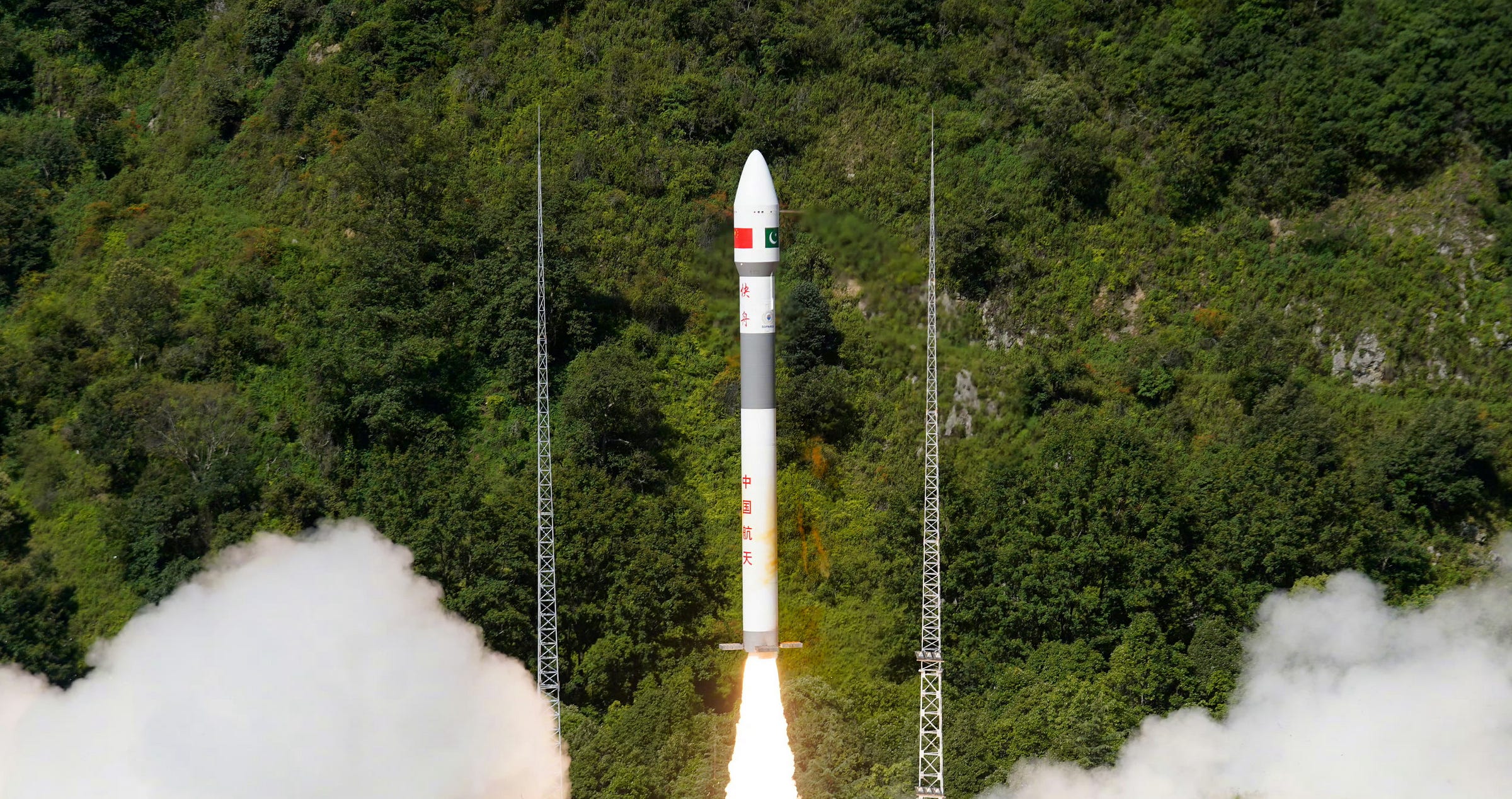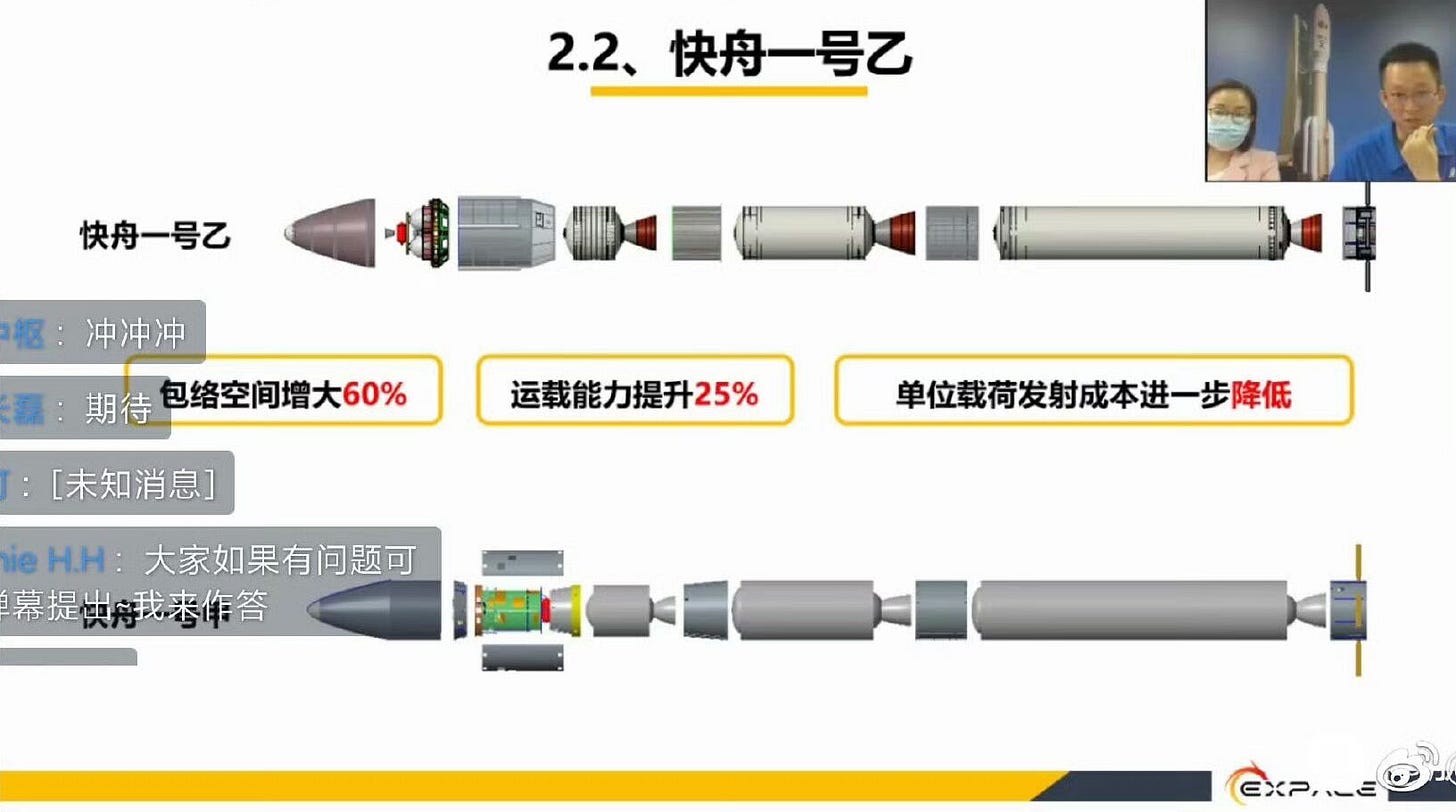Pakistani Satellite Soars From Xichang! [Kuaizhou-1A Flight-30]
ExPace has also returned Kuaizhou-1A to flight.

From the Xichang Satellite Launch Center, ExPace’s Kuaizhou-1A ‘Pro’ blasted off at 10:00 am China Standard Time (02:00 am Universal Coordinated Time) on July 31st, heading into low Earth orbit with an international satellite, a first for the rocket.
Riding into space atop of the rocket was Pakistan’s PRSC-EO2 (also called PRSC-S1), a remote sensing satellite. The spacecraft is designed to provide monitoring for natural disasters, including floods, landslides, earthquakes, glacier melting, and deforestation, as well as aiding in agricultural monitoring, natural resource management, urban planning, infrastructure development, and mapping of transportation networks.
The Innovation Academy for Microsatellites, Chinese Academy of Sciences (中国科学院微小卫星创新研究院) worked with Pakistan’s Space and Upper Atmosphere Research Commission to contribute expertise for PRSC-EO2.
PRSC-EO2 is also set to support the China-Pakistan Economic Corridor by observing potential natural hazards across key regions. This satellite follows PRSC-EO1, launched in January atop a Long March 2D, for a similar purpose.

Additionally, this mission from Xichang doubled as Kuaizhou-1A’s return-to-flight mission following an unclear anomaly in March. As such, this is believed to have been the second successful flight of the upgraded ‘Pro’ variant of the rocket, boasting a 1.8-meter diameter fairing, a payload capacity of up to 450 kilograms, and a restartable liquid-fueled fourth-stage for accurate orbital insertion1.
ExPace did not share details on the return-to-flight process in its brief post-launch blog post, along with not counting the failed launch.
Today’s launch was the 30th Kuaizhou-1A mission, and the 36th launch of the Kuaizhou series. This was also the 42nd launch attempt from China in 2025.
Liftoff video via 航天五线谱 and China航天 on Weibo.
Launch livestream replay via HUM News on YouTube.
Check out the previous Kuaizhou launch
ExPace May Have Suffered Loss of Vehicle During Launch [Kuaizhou-1A Flight 29]
Earlier today between 17:51 and 18:37 pm China Standard Time (09:51 to 10:37 am Universal Coordinated Time), ExPace’s Kuaizhou-1A launch vehicle (designated Y33) was set to liftoff from Launch Area 95A at the Jiuquan Satellite Launch Center. Howev…
What is Kuaizhou-1A?
This section is for those less familiar with China's various commercial launch vehicles.
The Kuaizhou-1A is one of the first commercial launch vehicles from China, having been developed by the China Aerospace Science and Industry Corporation (CASIC) and now manufactured by ExPace, a wholly owned subsidiary of CASIC. The first three stages of the vehicle burn an unspecified solid propellant with a liquid-fuelled fourth-stage for orbital insertion.
The payload capacity of the launch vehicle is currently as follows:
450 kilograms to low Earth orbit
360 kilograms to a 500-kilometer sun-synchronous orbit
300 kilograms to a 700-kilometer sun-synchronous orbit
On the launch pad, Kuaizhou-1A is believed to be 19.8 meters tall. Details about the vehicle are scarce but the fairing’s diameter is stated to be 1.8 meters. Four grid fins and various attitude control thrusters on the fourth-stage help control the vehicle during flight.
So far the Kuaizhou-1A has flown from all three inland launch sites, the Jiuquan Satellite Launch Center, the Taiyuan Satellite Launch Center, and the Xichang Satellite Launch Center.



![ExPace May Have Suffered Loss of Vehicle During Launch [Kuaizhou-1A Flight 29]](https://substackcdn.com/image/fetch/$s_!ecZE!,w_1300,h_650,c_fill,f_auto,q_auto:good,fl_progressive:steep,g_auto/https%3A%2F%2Fsubstack-post-media.s3.amazonaws.com%2Fpublic%2Fimages%2F6a457688-054d-4f13-b247-7fbfdfe884ee_1183x690.jpeg)
